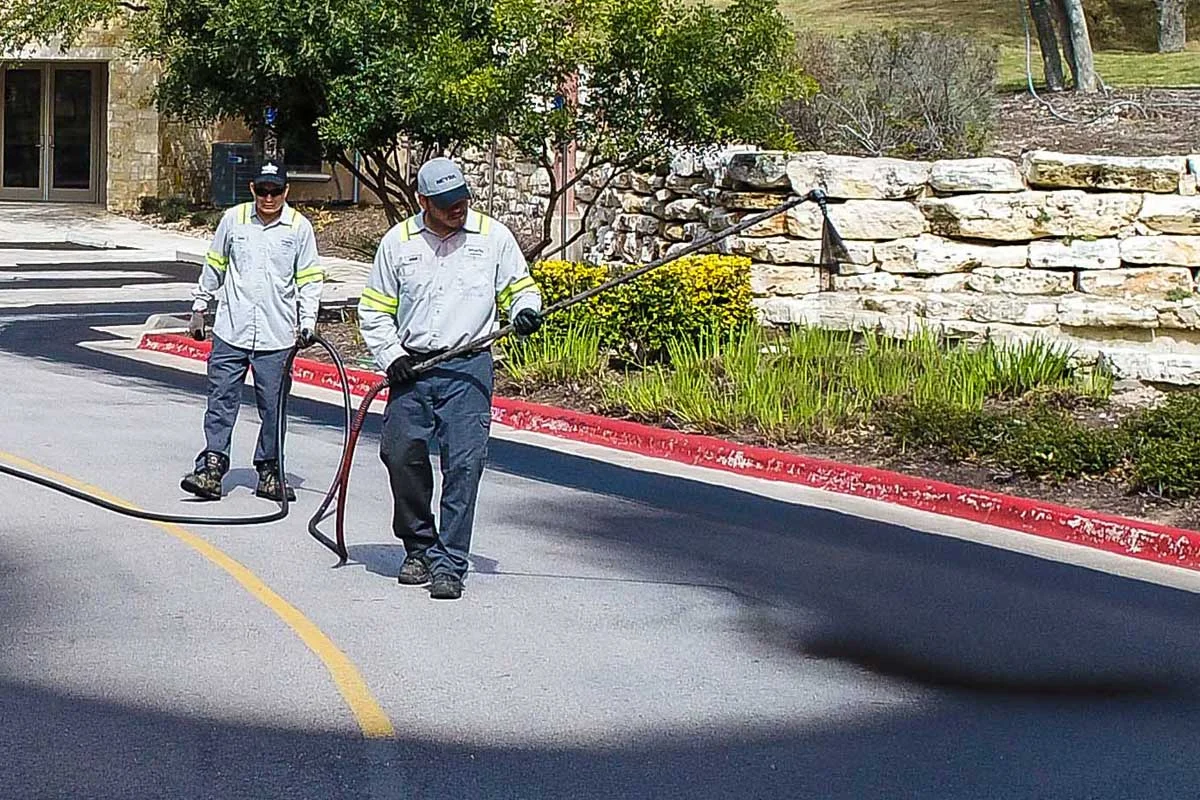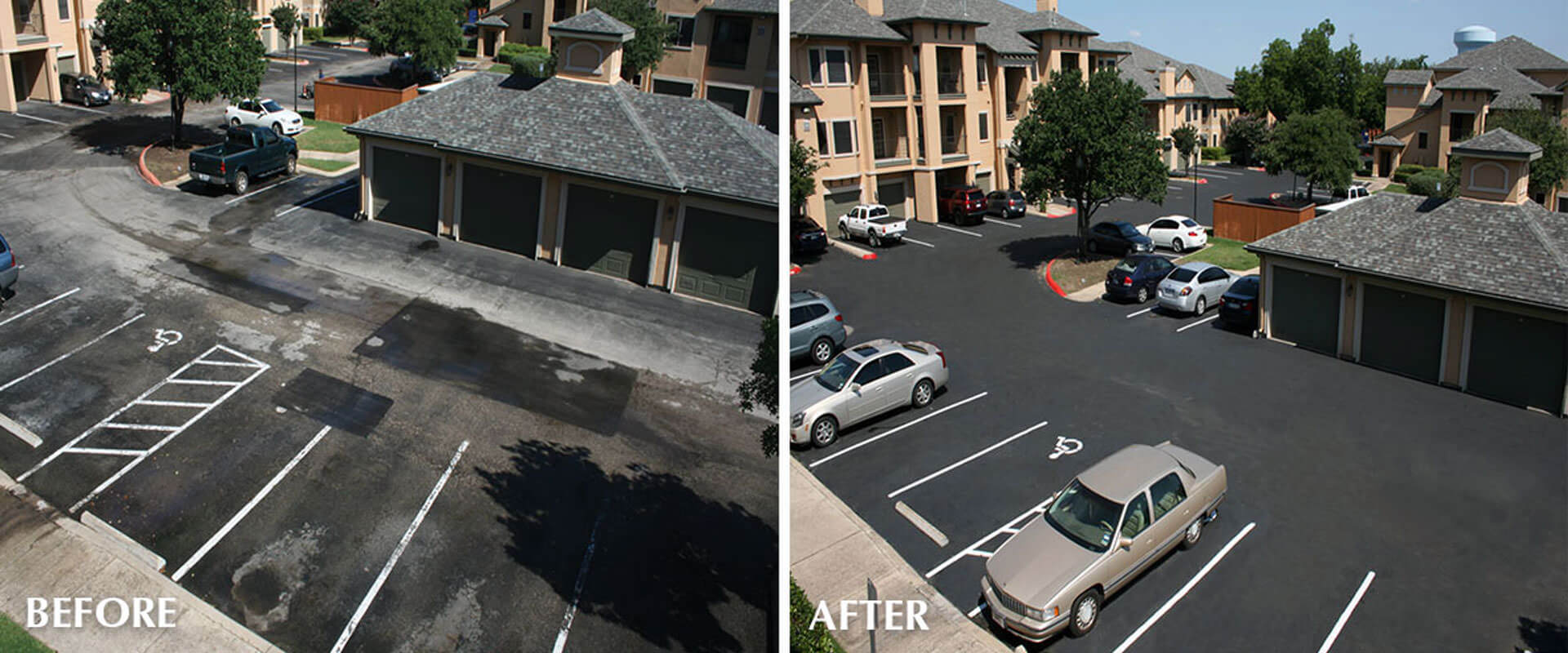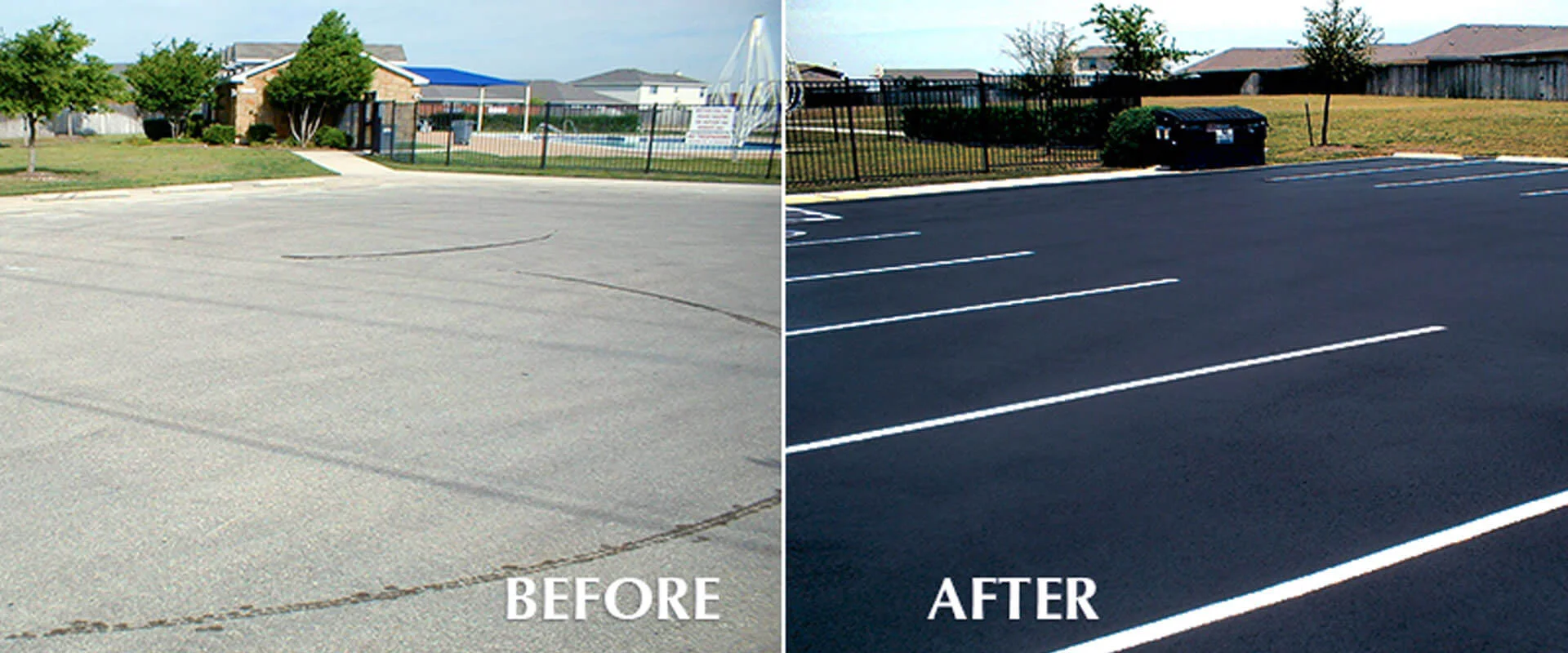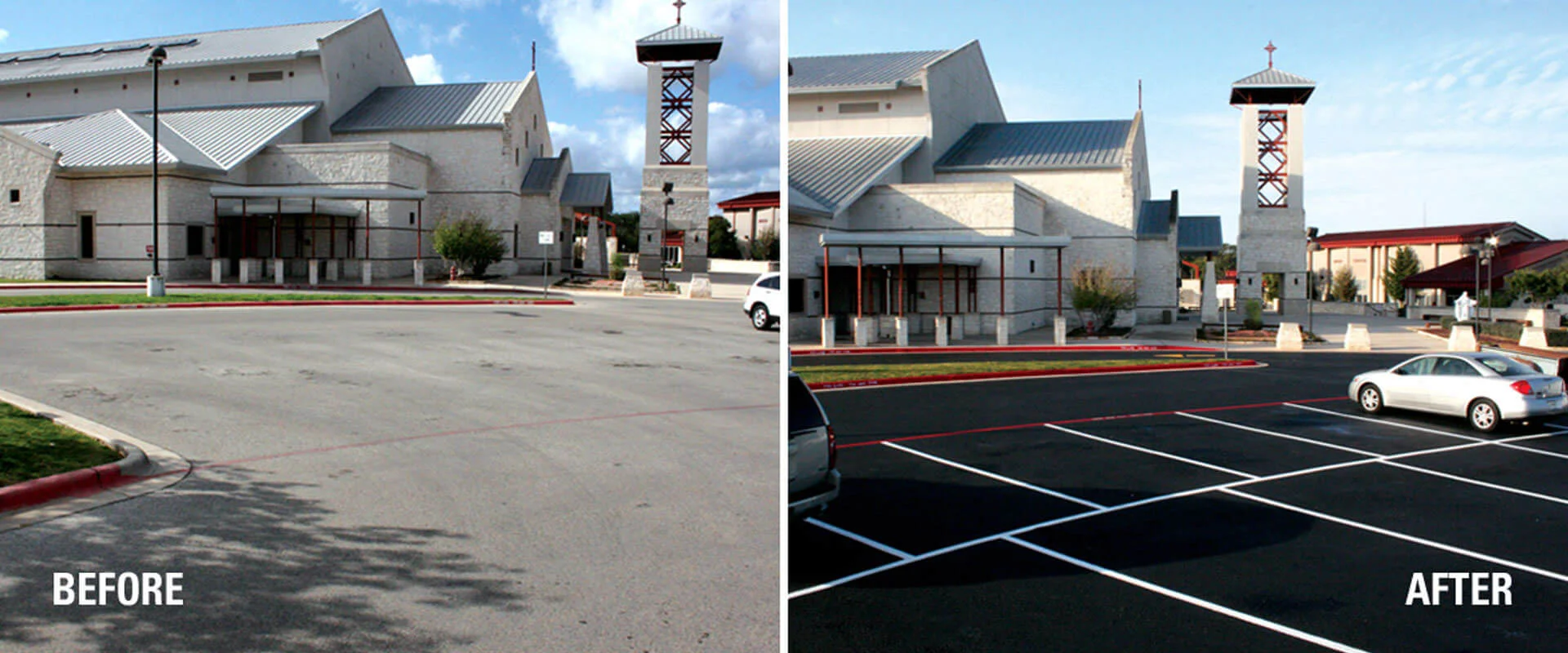
Seal coating, also known as pavement sealing, is the application of a protective coating to asphalt pavements (like parking lots). It provides a layer of protection from water, oils, ultraviolet damage and other elements. Seal coating extends the life of the pavement and makes it look great. Here are eleven more things that you should know about seal coating.
Your seal coat provider controls ratio of sealer/slurry, water, sand and any additives going into the final product. You should ask for the slurry, to water, to sand ratio in writing on your proposal or contract.
Cleaning the surface is the most important part of the seal coating process. Unless the surface is clean, the sealer will not adhere to the asphalt. You should ask your provider what their process is for cleaning, prior to seal coating.

Applied properly, sealer should not be significant on adjacent surfaces like concrete curbs, gutters, and sidewalks. More than 1/16 to 1/2 inch of material on adjacent surfaces reflects speed versus quality. You should ask your provider what you can expect from finished product.
PetroBond, or another barrier product, should be sprayed (not brushed) on engine leak areas in parking spaces. This creates a barrier between the sealer and petroleum leaks from vehicles. You should ask your provider what their process is for using a protective barrier in parking spaces.
We strongly recommend against seal coating when temperatures are below 50 degrees, chance of rain is 40% or higher or in heavy winds. More times than not, the results are less than you deserve. You should ask your provider what their weather policy is.

Seal coating in Austin, and the rest of Central Texas, is typically applied in two spray coats and a squeegee edge coat.
Older asphalt will often show white spots after sealer is applied and especially after a few days of vehicular traffic. This is caused by “polished” aggregate, where the rough sharp edges originally on the aggregates in asphalt have been worn smooth over time. Sealer does not adhere to this. The asphalt is still protected as the sealer has gone into the cracks and voids and is creating a barrier against the sun and rain. The sealer is doing its job. It’s just not a solid black surface.
Sealer will only seal cracks up to 1/8 of an inch wide. Hot pour crack fill with seal and protect is the best solution for cracks up to 1 inch. At Integrity, we offer Plyolastic and GatorMat to solve alligatoring or small repair issues without the expense of full asphalt repairs. Our project consultants will provide the most cost-effective alternatives for you. We are happy to perform asphalt and concrete repairs as well.

There are steps you can take to ensure seal coating success.
The schedule of work should be supported by the schedule site map, resident/tenant advisory, planning information, mix rate, warranty, etc.
Feel free to contact our project consultants for planning information, product information, free property assessments, 3, 5, 10-year maintenance plans and projected costs or just a standard bid. We do all seal coating and striping bids via ProCru software so there is no guess work. We know square footage and painting counts exactly so no one is guessing when we send you a proposal.
Our goal is to provide every customer best in the industry quality of product; value; communications; logistics and service after the sale. Please let us know how we can be of service!
Schedule your free, on-site consultation and estimate today! Call Integrity Paving & Coatings at (512) 853-9009 or get your quote online.